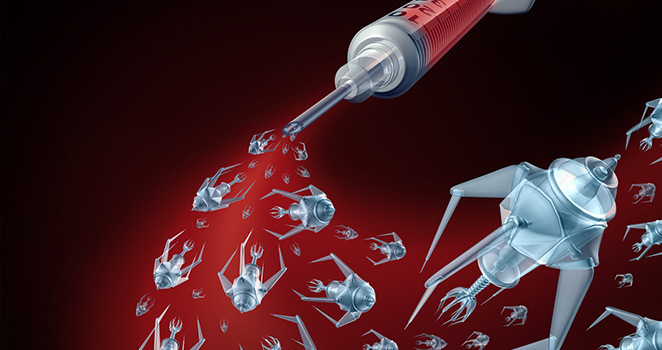Atrium Health Navicent Heart & Vascular Care
Robotics in Surgery

The topic of robotics has become increasingly popular in recent years. Between manufacturing, cleaning, automation, and social applications, robot-assisted living seems like a science fiction story made real. One of the most interesting and powerful uses of these robotics has been in the medical field, with specific emphasis on surgery. Advances have been made in many areas that decrease the invasive nature of many procedures as well as allowing for greater flexibility and accuracy from the hospital staff. There has even been the advent of remote surgery which allows procedures to be performed while the doctor is not physically present at the hospital. With innovation in the field continuing to grow we can only imagine as to the future of robotics in surgery.
Minimally Invasive
One of the biggest drawbacks to modern surgical procedures is how invasive they are for the patient. Laparoscopy involves inserting a camera into the body in order to get a better view of the area or organ being operated on. This type of manual instrument is rigid, however, and must be manipulated with incredible care so as not to injure the patient while surgery is being performed. Robotic systems have changed that entirely; the tools used by robotic systems are jointed and allow for ease of access to sensitive areas. The incisions made for access are small since the jointed instruments can be manipulated electronically while inside the body. This further serves to speed up recovery time so the patient spends fewer days in the hospital.
These types of small incision surgeries may one day replace most or all of the traditional open surgeries used today. A traditional open chest surgery requires a technique known as "rib spreading," where the rib cage is split so that the surgeon has the best possible access to the chest cavity. Rib spreading has a huge impact on the patient's recovery and subsequent quality of life. One specific instance of this surgery is where parts of the lung are removed due to cancer. Though there is an alternative to robot-assisted lung surgery, called VATS (video-assisted thoracic surgery), the former still has the advantage of added precision and maneuverability within the confined chest space.
Imaging and Accuracy
Real time readings have always been important to surgical operations. Robot-assisted heart surgery has taken this concept to the next level. The surgeon sits at a station in order to perform the procedure, able to control the robot's movements remotely. Using foot pedals, the surgeon can control two cameras inserted into the patient's body. These cameras are linked to two lenses and provide a 3D view of the heart. This allows the surgeon to control the view of the heart and all related instruments needed to perform the surgery without needing to look away from the station. This type of robotic-assisted surgery requires a human operator to move any of the instruments and is completely incapable of movement on its own.
The implements utilized by the robots assisting in surgery have more refined motions than even the most practiced doctor has. This is by design; the computerized systems translate the doctor's natural motions into the robots movements. Tremor reduction software reduces the error rate in surgery and allows for fluid, smooth motions of the robotic implements. Robot-assisted surgery has been associated with shorter hospitals stays, lower blood loss, and higher tissue retention than laparoscopic surgery.
The Future of Surgery
It may not be far-fetched to think of autonomous robots performing surgery in the future. We have a long way to go before getting to that point, however. At present, a human is always present to perform the functions necessary for surgery to take place. Most systems involve a surgeon controlling the actions of the robot assistant directly, though this can be done from a remote location. The best advantage of a remote surgery is that a skilled surgeon need not be present at the hospital for the procedure to take place. This could mean a reduction in waiting time for life saving procedures, as any available qualified doctor could fill the role.
As technology advances in related fields, the hope for more autonomy grows. Autonomous surgical robots would mean greater access to surgery and better healthcare for everyone. Pressure sensitivity coupled with advanced imaging would allow robots to be able to detect tiny changes during the operation far beyond human capability. There would always be a place for human doctors, however, as any complications or emergencies require decision making ability that is out of reach for any artificial intelligence yet conceived.
Conclusion
While the lofty goal of a fully autonomous robotic hospital is still science fiction, robot-assisted surgery is quite real and growing in popularity. Hundreds of thousands of surgeries have been performed using robot-assistance, but this is just a small fraction of total surgeries performed. Robotics contributes to the quality of life of patients who have undergone these procedures by reducing recovery time significantly compared to other procedures. These practices offer the same degree of accuracy as if the doctor was physically present without actually requiring it. There is always room for growth, however. Surgeons would like to see robotics with less training time, better results as compared to traditional methods, and reduced cost of robotics for greater accessibility. As of today, the margin of improvement over traditional methods is significant but minor. Additional innovations and smarter artificial intelligence will undoubtedly cement robot-assisted surgery as the preferred method for almost every procedure in the coming years.